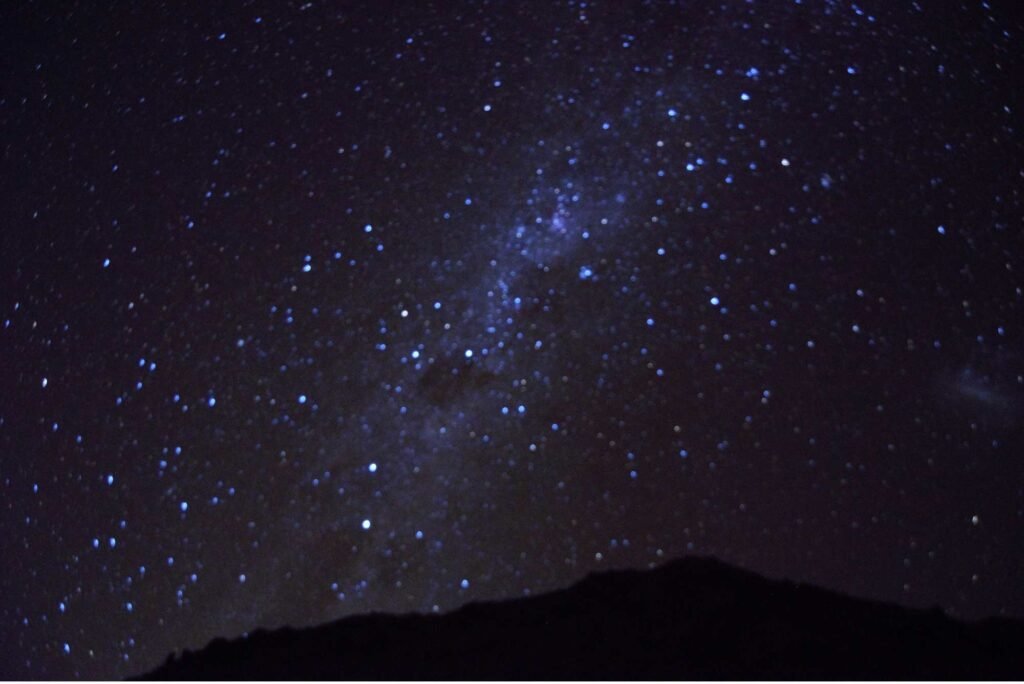Amazing clear skies in Northern Chile will allow you to gaze at the stars like never before.
Enjoy one of the purest and most transparent skies of the planet.
– Observatories visits
– Astronomical facilities
– Stargazing
Also, other parts of South America, among Chile of course, like Argentina, Bolivia, and Uruguay, is also home to some of the best astronomical observation sites in the world due to its high-altitude locations, clear skies, and minimal light pollution. Here, an overview of key astronomical features and observatories in each of these countries.

Chile
Chile is widely regarded as one of the best places on Earth for astronomy, thanks to its dry climate, high-altitude locations, and minimal light pollution. The Atacama Desert in northern Chile is especially famous for its clear skies.
Atacama Desert
Why it’s great for astronomy: The Atacama Desert is one of the driest places on Earth, providing nearly year-round clear skies with very low humidity. This makes it an ideal location for observatories and stargazing.
Notable sites:
ALMA (Atacama Large Millimeter/submillimeter Array): The largest and most advanced observatory in the world for observing the universe in the millimeter and submillimeter wavelength range. It’s located in the Chilean Andes, at an altitude of 5,000 meters (16,400 feet).
Paranal Observatory (ESO’s VLT): Located in the Atacama Desert, the Very Large Telescope (VLT) is one of the most advanced optical telescopes in the world. It is operated by the European Southern Observatory (ESO).
La Silla Observatory: Another ESO site, located in the Chilean Andes, which hosts several important telescopes for deep space observation.
Observatorio Cerro Tololo (Coquimbo Region)
A major observatory operated by the National Optical Astronomy Observatory (NOAO), located in the Andes at an altitude of 2,200 meters (7,200 feet). It is a prime site for optical and infrared astronomy.
Cerro Mamalluca Observatory (Vicuña)
A popular observatory in the Elqui Valley, known for its star tours, offering public access to the night sky with a variety of telescopes for stargazing.
Argentina
Argentina also has excellent stargazing locations, with many observatories in its mountainous regions, and high-altitude locations in the northwest.
Cerro Uritorco (Cordoba Province)
Known for its clear skies and minimal light pollution, it has been a popular site for amateur astronomers and skywatchers. The area has become increasingly popular for stargazing.
El Leoncito Observatory (San Juan Province)
Located in the Andes at over 2,500 meters (8,200 feet) above sea level, this observatory is part of the National University of San Juan. It is used for research and offers access to the public for stargazing events.
Los Molles Observatory (Mendoza Province)
Situated in the mountains near Mendoza, the observatory is part of the provincial government’s efforts to promote astronomy and offer stargazing experiences.
Pampa de las Leñas (Mendoza Province)
This remote area in the Andes is known for its dry conditions and minimal light pollution, making it a great spot for astronomical research and observing.
Bolivia
Bolivia’s high-altitude locations and relatively low light pollution make it an emerging destination for astronomy, particularly in the Andean region.
Potosí and Uyuni
The altiplano region, which includes the famous Salar de Uyuni (the world’s largest salt flat), offers some of the clearest skies in the world. This area is increasingly being promoted for stargazing tours. The high-altitude locations are perfect for astronomy, with many operators offering guided stargazing and astrophotography tours.
Cochabamba – Tunari National Park
The high-altitude park offers clear skies with minimal light pollution. Local astronomy enthusiasts often organize stargazing nights here, attracting both locals and tourists.
Chacaltaya Observatory (La Paz)
Chacaltaya, an old ski resort located at 5,300 meters (17,400 feet) above sea level, has been home to a small observatory and is used for stargazing events, particularly due to its altitude and clear skies.
Uruguay
While Uruguay is not as famous for its astronomy as Chile or Argentina, it does offer some excellent spots for stargazing, with low light pollution and a relatively calm climate.
Cerro de los Azules (Lavalleja Department)
This is one of the best locations for stargazing in Uruguay, with minimal light pollution and clear skies. It is a popular destination for local astronomy enthusiasts.
Astronomy and Stargazing Tours
Several tour operators in Uruguay offer guided stargazing experiences in rural areas. These tours typically take place in areas like the Cabo Polonio National Park, known for its remote location and dark skies, ideal for observing the Milky Way.
Observatorio Astronómico de la Universidad de la República (Montevideo)
Located in the capital city of Montevideo, this observatory is used for both research and public outreach. The observatory offers public tours and stargazing events.
Why These Countries are Ideal for Astronomy
Altitude: The high altitudes of many observatories in the Andes and the Atacama Desert mean clearer, thinner air with less atmospheric distortion.
Dry Climate: The dry conditions in regions like the Atacama Desert and parts of Argentina and Bolivia result in clearer skies with minimal cloud cover.
Low Light Pollution: Many of the stargazing sites in these countries are located in remote, sparsely populated areas, which helps reduce light pollution and allows for the best visibility of celestial objects.
So, South America, especially Chile, Argentina, Bolivia, and Uruguay, offers a wealth of opportunities for astronomical research and stargazing, with some of the best observatories and most pristine skies in the world.






